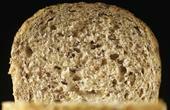Carbohydrates( I)

Carbohydrates ( or saccharides) are one of the main groups of organic compounds of the body. Carbohydrates are the primary products of photosynthesis, as well as the starting materials for the biosynthesis of other substances in plants, such as organic acids and amino acids. Carbohydrates are contained in the cells of all other living organisms. The carbohydrate content in the animal cell varies within 1-2% of the mass of the dry matter, and in the plant this quantity can sometimes reach 85-90%.
Carbohydrates include carbon, hydrogen and oxygen, and in most carbohydrates the ratio of hydrogen and oxygen is identical to their ratio in water. Hence the name "carbohydrates".Representatives of carbohydrates are such compounds as glucose( C6H12O6) or sucrose( C12H22O11).In the derivatives of carbohydrates can also contain other elements. All types of carbohydrates are divided into monosaccharides( simple) and polysaccharides( complex).
Providing cells with energy, the biosynthesis of many organic substances, as well as neutralizing and removing from the body of poisonous substances that penetrate from the outside or are formed during the metabolism, for example, during the breakdown of proteins, all these processes are associated with the conversion of monosaccharides, which include glucose,which is a universal source of energy. The combination of two or more monosaccharides( such as glucose, galactose, mannose, arabinose or xylose) leads to the formation of di- and polysaccharides. Thus, two molecules of monosaccharides form a molecule of disaccharide, connecting with each other with the release of a water molecule. Sugar( cane sugar), maltose( malt sugar), and lactose( milk sugar) are typical representatives of disazarides. Disaccharides and monosaccharides are quite similar in properties. Both are well dissolved in water and have a sweet taste. Polysaccharides include such substances as starch, glycogen, cellulose, chitin, callosa and others.
The main role of carbohydrates in nutrition is related to their energy function. During their enzymatic cleavage and oxidation, the energy used by the cells is released. Mainly, polysaccharides act as spare products and easily mobilized sources of energy( such as, for example, starch and glycogen).They are also used as a building material( cellulose and chitin).The use of polysaccharides as reserve substances is convenient for a variety of reasons related to their characteristics. For example, they do not dissolve in water, thereby not exerting on the cell either the osmotic or chemical effects, which is a very important factor when stored in a living cell for a long time. The solid, dehydrated state of polysaccharides increases the usable mass of the stock products by saving their volume. In addition, for this reason, the probability of consumption of these products by pathogenic bacteria and other microorganisms that suck in substances throughout the body surface is significantly reduced and can not be swallowed. But when such a need arises, reserve polysaccharides are easily converted to simple sugars by a process such as hydrolysis. .. more
Used materials:
Shilov VN, Mits'yo VP"Healthy food"
